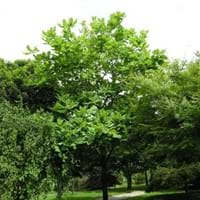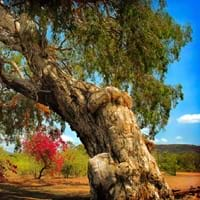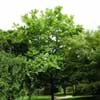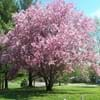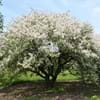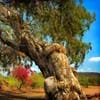Life Span
Perennial
Annual
Origin
North America, United States, Mid-Atlantic United States, Southeastern United States, Central United States, South-Central United States
Southeastern Asia, Australia
Types
Not Avaialble
Not Available
Habitat
Woodland Garden Secondary
Warm and moist climatic conditions
USDA Hardiness Zone
5-8
9-15
Sunset Zone
4, 5, 6, 7, 8, 9, 14, 15, 16, 17, 18, 19, 20, 21
H1, H2, 9, 12, 13, 15, 16, 17, 20, 21, 22, 23, 24
Habit
Oval or Rounded
Upright/Erect
Flower Color
White
Light Yellow, Light Pink, Ivory
Flower Color Modifier
Bicolor
Bicolor
Fruit Color
Rose
Sandy Brown
Leaf Color in Spring
Green, Light Green, Silver
Green, Dark Green
Leaf Color in Summer
Dark Green, Silver
Dark Green
Leaf Color in Fall
Yellow, Yellow green, Brown, Silver
Dark Green
Leaf Color in Winter
Not Available
Dark Green, Plum
Leaf Shape
Oblong
Elliptic
Plant Season
Spring, Summer, Fall, Winter
Spring, Summer, Fall, Winter
Sunlight
Full Sun
Full Sun, Partial Sun
Type of Soil
Clay, Loam
Clay, Loam, Sand
The pH of Soil
Acidic, Neutral
Acidic, Neutral, Alkaline
Soil Drainage
Average
Average
Bloom Time
Early Summer
Late Summer, Early Fall, Fall, Late Fall
Tolerances
Not Available
Wet Site, Pollution, Drought, Soil Compaction
Where to Plant?
Ground
Ground
How to Plant?
Seedlings
Seedlings
Plant Maintenance
Medium
Medium
Watering Requirements
Needs watering once a week
Get enough water whenever the soil is dry
In Summer
Lots of watering
Lots of watering
In Spring
Moderate
Moderate
In Winter
Average Water
Average Water
Soil pH
Acidic, Neutral
Acidic, Neutral, Alkaline
Soil Type
Clay, Loam
Clay, Loam, Sand
Soil Drainage Capacity
Average
Average
Sun Exposure
Full Sun
Full Sun, Partial Sun
Pruning
Remove dead or diseased plant parts
Remove damaged leaves, Remove dead branches, Remove dead leaves
Fertilizers
Balanced organic fertilizer
All-Purpose Liquid Fertilizer
Pests and Diseases
Bacterial leaf spot, Canker, Powdery mildew, Spot anthracnose
Red blotch
Plant Tolerance
Drought
Drought
Flower Petal Number
Single
Single
Fragrant Leaf
No
Not Available
Fragrant Bark/Stem
No
Not Available
Foliage Texture
Coarse
Fine
Foliage Sheen
Matte
Matte
Attracts
Scale Insects, Snails
Birds, Hummingbirds
Allergy
Mild Allergen
Not Available
Aesthetic Uses
Formal Garden, Showy Purposes
Showy Purposes
Beauty Benefits
Not Available
Not Available
Environmental Uses
Air purification
Air purification
Medicinal Uses
Odontalgic, Stomachic
Antibiotic, Cough, Headache, hemorrhoids, Respiratory Disorders, Rheumatism
Part of Plant Used
Bark
Bark, Flowers, Leaves, Wood
Other Uses
Used for flooring, cabinet making
Used as essential oil
Used As Indoor Plant
No
No
Used As Outdoor Plant
Yes
Yes
Garden Design
Feature Plant, Shade Trees
Shade Trees, Street Trees, Tropical
Botanical Name
MAGNOLIA macrophylla
MELALEUCA quinquenervia
Common Name
Bigleaf Magnolia, Large-leaved Cucumber Tree, Umbrella Tree
Cajeput Tree, Paperbark Tree, Punk Tree
In Hindi
मैगनोलिया
Paperbark tree
In German
Umbrella Tree
Paperbark tree
In French
Umbrella Tree
Paperbark tree
In Spanish
Árbol de paraguas
Paperbark tree
In Greek
Umbrella Tree
Paperbark tree
In Portuguese
Árvore de guarda-chuva
Paperbark tree
In Polish
Umbrella Tree
Paperbark tree
In Latin
O lignum
Paperbark tree
Phylum
Magnoliophyta
Magnoliophyta
Class
Magnoliopsida
Magnoliopsida
Order
Magnoliales
Myrtales
Family
Magnoliaceae
Myrtaceae
Clade
Angiosperms, Magnoliids
Angiosperms, Eudicots, Rosids
Tribe
Not Available
Not Available
Subfamily
Magnolioideae
Not Available
Number of Species
Not Available
Importance of Umbrella Tree and Paperbark Tree
Want to have the most appropriate plant for your garden? You might want to know the importance of Umbrella Tree and Paperbark Tree. Basically, these two plants vary in many aspects. Compare Umbrella Tree and Paperbark Tree as they differ in many characteristics such as their life, care, benefits, facts, etc. Every gardener must at least have the slightest clue about the plants he wants to plant in his garden. Compare their benefits, which differ in many ways like facts and uses. The medicinal use of Umbrella Tree is Odontalgic and Stomachic whereas of Paperbark Tree is Antibiotic, Cough, Headache, hemorrhoids, Respiratory Disorders and Rheumatism. Umbrella Tree has beauty benefits as follows: Not Available while Paperbark Tree has beauty benefits as follows: Not Available.
Compare Facts of Umbrella Tree vs Paperbark Tree
How to choose the best garden plant for your garden depending upon its facts? Here garden plant comparison will help you to solve this query. Compare the facts of Umbrella Tree vs Paperbark Tree and know which one to choose. As garden plants have benefits and other uses, allergy is also a major drawback of plants for some people. Allergic reactions of Umbrella Tree are Mild Allergen whereas of Paperbark Tree have Not Available respectively. Having a fruit bearing plant in your garden can be a plus point of your garden. Umbrella Tree has showy fruits and Paperbark Tree has no showy fruits. Also Umbrella Tree is not flowering and Paperbark Tree is not flowering . You can compare Umbrella Tree and Paperbark Tree facts and facts of other plants too.
